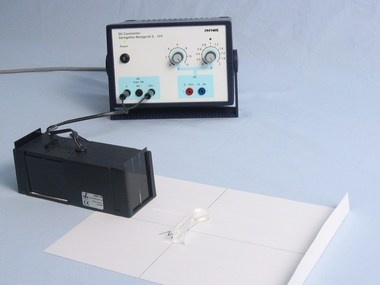Principle
Spherical and chromatic aberration are the two most well-known defects of image formation associated with a lens and whose correction is achieved by incorporating expensive lens systems (achromatic) in high quality optical apparatus.
For this reason, the students should investigate the colour phenomena that appear when light is refracted by a convex lens in this experiment. After the first experiment (large aperture opening) in which the coloured margins of the cone of light can be well observed, it is the goal of the subsequet experiments (in which the light beams close to and far away from the axis are used and their different degrees of colour splitting are seen) to allow the students to understand the cause of the colour phenomena. Therefore, at the end of the section 'Refraction by lenses', opportunities are given to apply the law of refraction, as well as observations on refraction at prisms, to new facts. On the other hand, the opportunity is given in this experiment to observe that white light is composed of different colours and that refraction is a function of wavelength.
In conjuction with the investigation of colour splitting by a concave lens, the possibility of correcting of lens defects with an appropriate combination of convex and concave lenses can be discussed.
Benefits
- Multifunctional light box - All-in-one: Can be used for geometric optics on the table, colour mixing and on an optical bench
- Extension with others sets at anytime, no additional light sources needed, recognition value for students
Tasks
What are colour defects of a lens? Investigate colour splitting of white light following refraction at a planoconvex lens.



